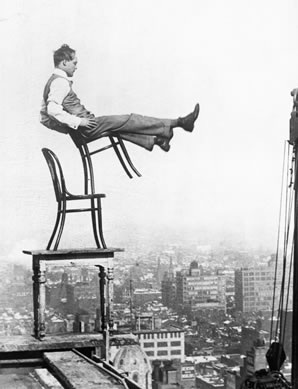When it comes to fitness elements for skiing, balance is key. In particular dynamic balance. The first article below includes definitions of the difference between static and dynamic balance. The second article was written for college athletes about the fact that better balance makes it easier to use whatever strength you have. Click on a link to read an entire article. To ski efficiently requires good balance, both side-to-side and fore-aft.
In 2012 when I was doing knee rehab, I found the emphasis on the importance of proprioception made a lot of sense. When I popped off an ACL, my balance was very off for the first week. Learning about proprioception was very helpful.
The best way to start improving 1-leg balance is to start with static balance exercises. My
first blog post was about balance exercises that can be done anytime, anywhere.
Yoga & Balance: Static vs. Dynamic Balance
https://annwestyoga.com/yoga-balance-static-vs-dynamic-balance/
Static balance

Fearless balance!
Static balance is the ability to balance while stationary. It’s what most people think of when they picture a balanced position. To be able to balance statically your body’s
center of gravity must be lined up above your center of support. When standing on two legs, the center of support is the center point between your two feet. When standing on one leg, it’s at the center of the standing leg foot.
Let’s pause to spare a thought for our fearless balancer perched on two narrow chair legs to the right. Notice how his center of gravity, the point between the weight of his trunk leaning back and his legs stretching forward, lines up above the two back legs of the chair he’s sitting on. The heavier weight distribution of his trunk and head leaning back make up for the slight forward positioning of the lower chair and table.
Dynamic balance
Dynamic balance on the other hand, is the ability to balance while in motion or when switching positions. Your body is being affected by two forces, gravity and momentum, each one pulling you in different directions. In dynamic balance your
inner balance sensors have to work harder to keep your center of gravity above your base. This is the main type of balance we use during movement in our daily lives.
http://www.collegesportsscholarships.com/balance-training-athletes.htm
Balance and sports
While strength and cardio training are critical aspects of conditioning, balance is the foundation of good health, and everyone can improve their balance, regardless of ability, according to Louis Stack, a Canadian National Speed Skiing team member and balance training expert. In fact, some researchers suggest that the better you can balance, the less time you will need to spend increase your strength. “Balance conditioning is a way to train the body to make better use of the strength you already have,” says Stack. He suggests placing more emphasis on learning to move efficiently, with little wasted effort: “When you train someone for stabilization, proprioception and balance, by default he or she is at less risk for injury. Good balance reduces [the] need for additional effort.
“Balance is both a movement skill that enhances technique, and a conditioning element that can be improved. Another way to understand balance is as a function of the nervous system, which is directly influenced by the five senses. A sixth sense — proprioception — in the muscles, bones, hands, feet and connective tissues alerts the body when balance is threatened. The body’s balance centers — the eyes, ears and feet — work together to sense imbalance and help correct posture. Basically, the body’s ability to right itself (balance) is activated by stimulus: a response to an unexpected bump in the terrain, a sudden change in wind direction or an impulsive pass of the ball. Action in the canals of the ears detects abnormal tipping of the head in relation to gravity, and sends signals to the nervous system. When you lose balance, your brain sends instructions to the muscles and bones about how and when to react.
Balance training facilitates body awareness about the relationship of mass (hips) over the base of support (distance created between the feet or over one foot). While playing sports, this is a difficult thing to sense, but in a controlled training environment, these “feelings” can be introduced to athletes. The benefit is in “remembered” reactions to imbalance created in training situations. Balance awareness becomes an innate, automatic skill.

